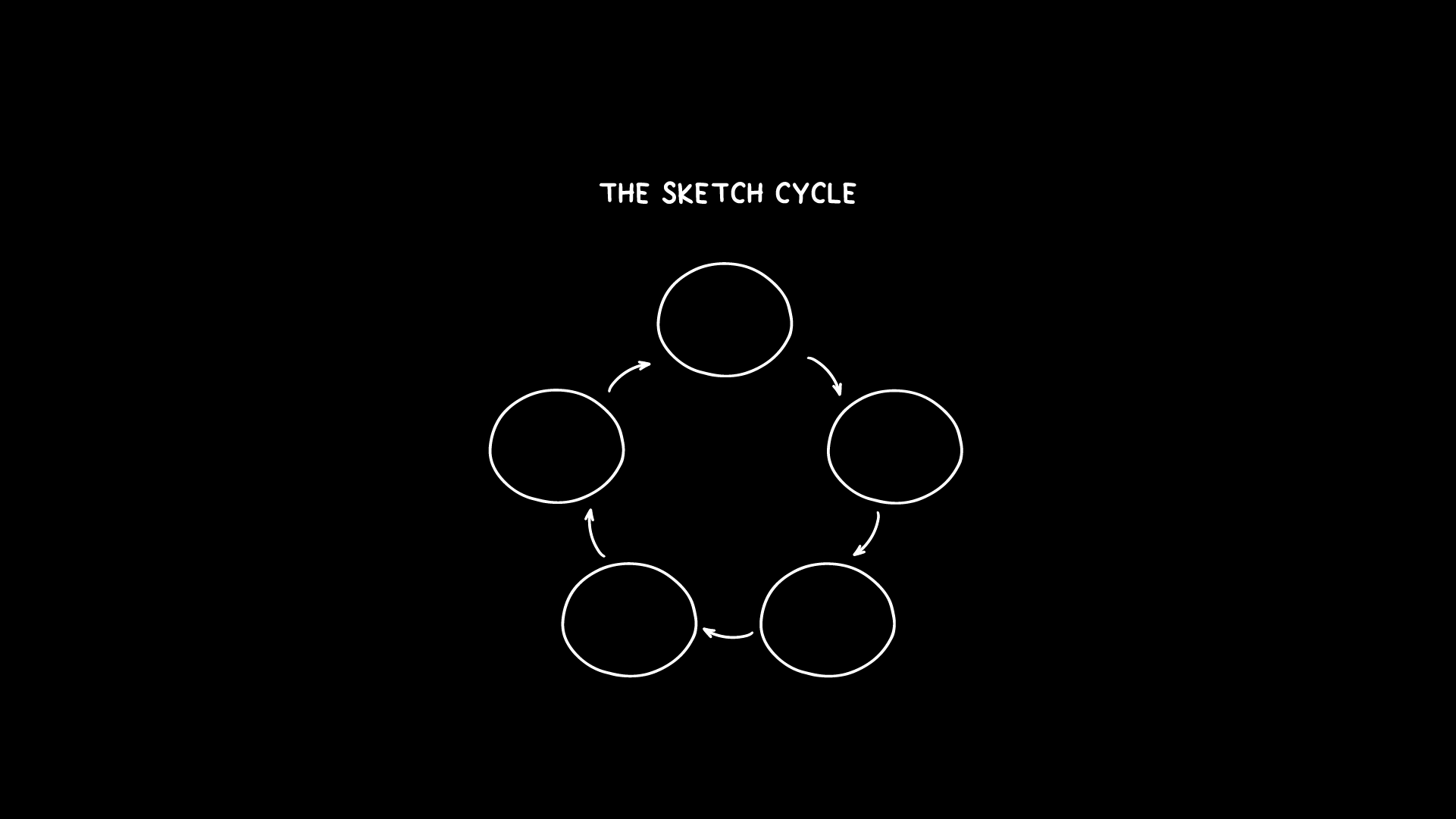The Sketch Cycle: How to Push Through Mental Blocks When Sketching Logo Concepts
Sketching logo ideas is one of the most exciting parts of the identity design process—but also one of the most mentally draining.
You've filtered your ideas using The Identity Brainstorm and The Logo Fit Model.
Now, it’s time to turn those ideas into visual concepts.
But this is often where things get tough.
The page is blank. The pressure is high. And your mind starts to slow down.
In this blog, I want to break down why that happens—and more importantly, how to push through it.
Because sketching isn't just about drawing—it's about solving.
And sometimes the biggest battle is mental.
Key Takeaways
There are 5 psychological stages you go through when sketching concepts.
Knowing the sketch cycle helps you stay focused and avoid wasting energy.
Use timers, movement, and clear objectives to regain momentum.
Mental resistance is normal—breakthroughs often come right after friction.
The goal is to sketch smarter—not just harder.
The Playstation Problem
I remember being a kid, playing PlayStation. Starting a new game with full excitement—locked in on story mode, ready to win.
Then I’d hit a boss I just couldn’t beat.
Hours went by. I tried different strategies. Mash the buttons. Try again. Still no progress.
Frustrated, I gave up. Shut it off for a few days.
But when I came back, I beat the level on my first try.
It felt easier—but the game hadn’t changed. I had.
I had rested. My brain had subconsciously processed the patterns. I returned with clarity.
That experience stuck with me—because I’ve seen it repeat itself not just in games, but in life, and especially in design.
Sketching logos often follows the same rhythm. You start strong, hit friction, and suddenly face a block that feels impossible.
But it’s not about your drawing ability. It’s about understanding the mental stages of problem-solving—and learning how to move through them.
The Sketch Cycle
The Sketch Cycle
Over the years, I noticed a recurring pattern in my sketching process. A loop I kept going through, especially when things felt hard.
I call it: The Sketch Cycle
It’s called a cycle because these stages tend to repeat within the same project—whether you’re exploring a new direction or refining an existing idea.
Each sketching session brings its own loop of momentum, friction, drift, and breakthrough.
It includes 5 psychological stages:
The Sketch Cycle - Full
Excitement - You're pumped. The first few lines feel promising.
What to do: Use your energy wisely. Set a Pomodoro timer (25 min focus, 5 min break) to preserve momentum and avoid early burnout.Friction – Ideas start slowing. You begin to overthink.
What to do: Don’t panic. Take a short walk. Look away. Stretch. Friction is a sign you’re moving past the surface level.Drift – You open a new tab. You scroll. You start checking your phone.
What to do: This is your mind avoiding the discomfort of problem-solving. Before you start sketching, set a clear goal:
“By 1pm I’ll have 3 practical ideas I’m confident in.” Speaking it into existence gives you direction—and focus prevents the drift.The Wall – You feel blocked. Every sketch looks the same. You start doubting everything.
What to do: Step back. Revisit your original ideas. Look at your brainstorm again. Or sleep on it. Energy conservation is key here—especially as a Lean Logo Designer.Breakthrough – You land a direction that clicks. Things begin to flow again.
What to do: Capture the momentum. Build multiple variations of the winning direction. Use your second wind.
This cycle repeats. It’s normal. But the key is knowing which stage you’re in, so you can act accordingly.
Why Understanding the Sketch Cycle Matters
Recognizing where you are in the Sketch Cycle makes a huge difference.
When you’re aware of the phase you’re in—whether it’s friction, drifting, or hitting a wall—you become conscious of what’s happening internally, not just what’s happening on the page.
This awareness gives you control. It helps you respond with intention—whether that’s stepping away, resetting with a timer, or realigning with a clear goal.
Most importantly, it helps you save time and energy as a designer.
Instead of pushing endlessly or doubting yourself, you move smarter.
You preserve your creative battery and reallocate that focus to other stages of the project—like refinement, presentation, or client storytelling.
Conclusion
Sketching isn’t just a creative challenge—it’s a mental one.
Understanding The Sketch Cycle gives you an edge. It helps you identify the resistance, push through it, and avoid burning out.
The secret is to be strategic with your energy.
Use tools like Parkinson’s Law (set shorter time constraints) and stay aware of when you’re drifting or hitting the wall.
Because the truth is: the gold often comes right after it gets hard.
If you stay in the loop long enough—and manage your energy well—you’ll always find your breakthrough.
What do you do when sketching starts to feel like a mental battle?


